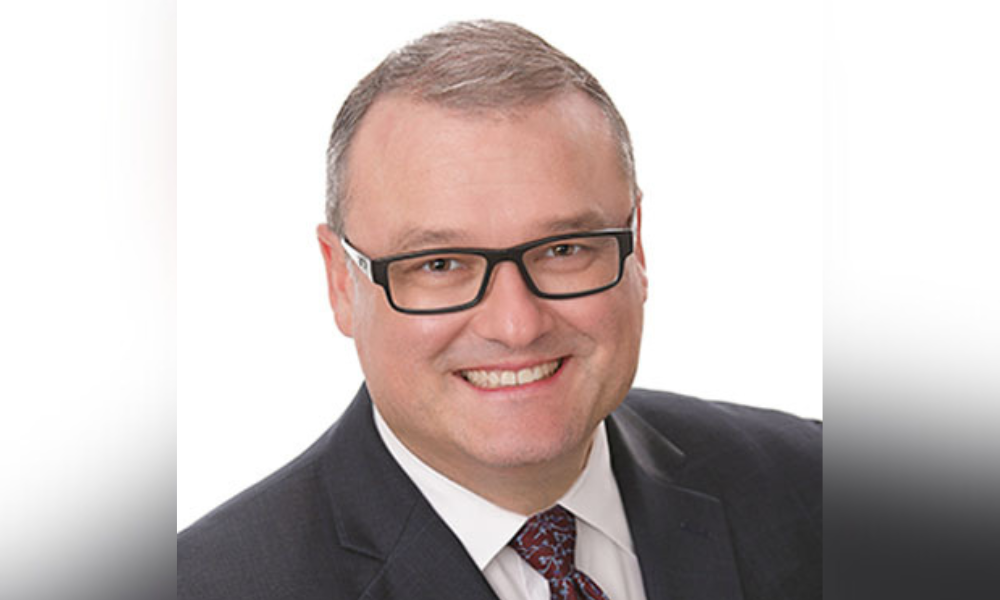Paul MacDonald details how Harvest ETFs leverages enduring trends and breakthroughs

This article is sponsored by Harvest ETFs
Unlike sectors swayed by economic cycles, healthcare thrives on enduring forces that remain steady through the ups and downs of the global market. “Unequivocally, it’s the permanent non-cyclical drivers that we see,” explains Paul MacDonald, Chief Investment Officer at Harvest ETFs. These drivers—aging populations, developing markets, and technological innovation—have underpinned healthcare’s resilience and growth for decades.
MacDonald, with over 20 years in the investment industry, has been immersed in the healthcare sector for much of the past decade. His perspective is shaped by years of research and an in-depth understanding of the forces reshaping the industry. “We’re right at the cusp,” he says, referring to a demographic shift that’s redefining global healthcare demand.
Permanent drivers: Aging populations, expanding markets, and innovation
In developed nations, large portions of the population are moving into the 65+ age group, a cohort that spends exponentially more on healthcare. This structural shift, fueled by longer lifespans and chronic conditions associated with aging, is creating an unprecedented surge in demand for medical services, pharmaceuticals, and advanced treatments.
Beyond demographics, MacDonald highlights the rising impact of developing markets. As nations achieve greater wealth, healthcare emerges as a critical priority. “If you think about the hierarchy of needs,” he explains, “once food, water, and shelter are met, healthcare becomes the next focus.” This pattern is evident in emerging economies, where spending on healthcare has grown disproportionately alongside rising incomes, opening new markets for innovation and investment.
Perhaps the most dynamic force driving the healthcare sector is technological innovation. From life-saving drugs to robotic-assisted surgeries, breakthroughs are transforming patient outcomes and creating entirely new industries. “We’re not just talking about devices that track your heart rate,” MacDonald notes. “We’re talking about robotic surgeries and biological drugs like the GLP-1 class for weight management. These are major innovations that are reshaping healthcare as we know it.”
Breakthrough drugs like Novo Nordisk’s Ozempic® and Wegovy®, as well as Eli Lilly’s Zepbound™ and Mounjaro™, are changing the way obesity and diabetes are managed. These treatments address a staggering statistic: more than 500 million obese adults worldwide. The potential market is vast, and the impact on stock prices has been profound. “It’s like artificial intelligence for healthcare,” MacDonald says, drawing parallels between these drugs’ transformative impact and the tech sector’s growth drivers. Companies leading these innovations have experienced dramatic gains.
MacDonald highlights, “If you look at what’s been driving the market, tech has seen massive earnings growth, and that’s why it’s done so well,” he says. “But healthcare earnings growth has started to reaccelerate. Looking into 2025, I’m optimistic about the sector’s potential.”
Harvest ETFs’ flagship healthcare fund, the Harvest Healthcare Leaders Income ETF – HHL-T, is built on these enduring themes. The fund’s strategy combines diversification across subsectors—pharmaceuticals, medical devices, managed care, and more—with a disciplined approach to selecting high-quality, market-leading companies.
A disciplined approach: Diversification and active income strategies
The process begins with narrowing a broad universe of healthcare companies to a focused portfolio of 20 holdings, all vetted for market leadership, innovation, and financial health. “I often say to people, look at the underlying holdings first,” MacDonald explains. “Are these the 20 stocks you want to hold long-term? If so, are you willing to forego a little upside each month for a big tax-efficient distribution? That trade-off has remained relevant over the years.”
A unique element of HHL’s strategy is its active covered call approach, which enhances monthly distributions while managing risk. By writing options on up to 33% of the portfolio, the fund generates consistent, tax-efficient income. “It’s not about hitting the enter key,” MacDonald explains. “We assess each position, weighing potential catalysts like FDA approvals or industry events to decide how much to write on a stock.”
This disciplined management has enabled HHL to deliver steady distributions for a decade, recently surpassing $500 million in payouts. Even during volatile markets, the fund has maintained its focus on balancing income and growth. “We’ve never missed a distribution,” MacDonald points out. “That kind of stability doesn’t happen by accident.”
While healthcare is less tied to economic cycles, it is not without risks. One common concern is politics, particularly regulatory changes that could impact the industry. However, MacDonald sees this as less of a factor in today’s environment. “Politics always come up as a potential risk,” he acknowledges, “but right now, it’s the quietest I’ve seen in a decade. The current policies, like the Inflation Reduction Act, are already being implemented, and there’s minimal new political rhetoric affecting the sector.”
Instead, MacDonald highlights stock-specific risks as the primary challenge. Patent cliffs, where major drugs lose exclusivity, can create significant revenue gaps for pharmaceutical companies. “You need a strong R&D pipeline to backfill those gaps,” he explains. To mitigate this, Harvest’s strategy emphasizes diversification.
For investors, the sector offers a rare blend of stability and dynamism, and Harvest ETFs focuses on quality holdings, and an active income strategy, the fund strikes a balance that resonates with both income-focused and growth-oriented investors.
In MacDonald’s words, “It’s proof of work. The fund is reaching its 10-year anniversary this December, this means ten years of distributions, strong performance, and a commitment to long-term sustainability. That’s what sets us apart.”
For investors who want even higher levels of income and growth potential, there is the Harvest Healthcare Leaders Enhanced Income ETF – HHLE-T. This ETF applies modest leverage to an investment in HHL at approximately 25%. It last paid out a monthly dividend of $0.0934 per unit. That represents a current yield of 11.03% at as November 25, 2024. HHLE has delivered annualized growth of 11.58% YTD, 26.73% 1Y, and 12.89% since inception.
Healthcare’s enduring relevance is rooted in necessity and progress. The sector’s foundation remains strong and innovations like robotic-assisted surgeries and AI-powered diagnostics promise to redefine what is possible in medical care.



